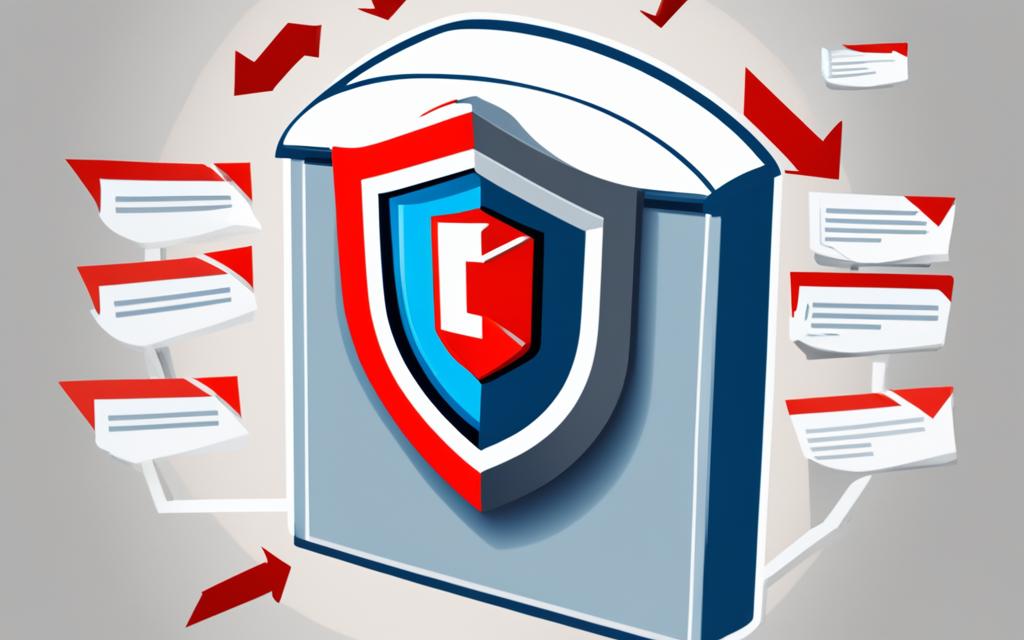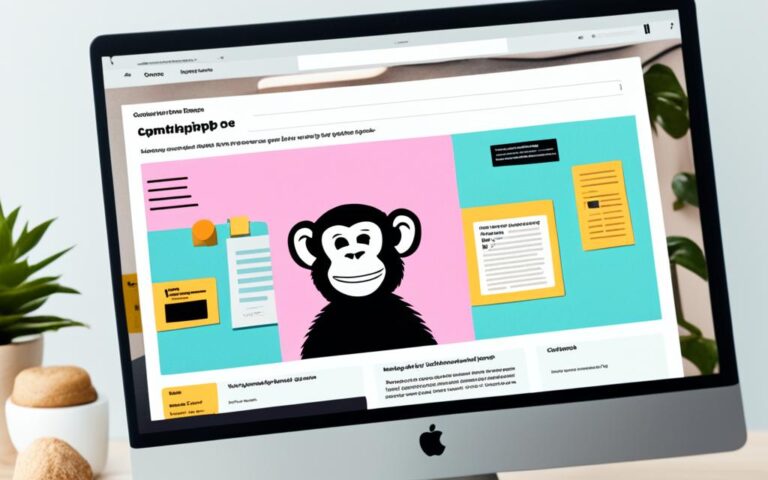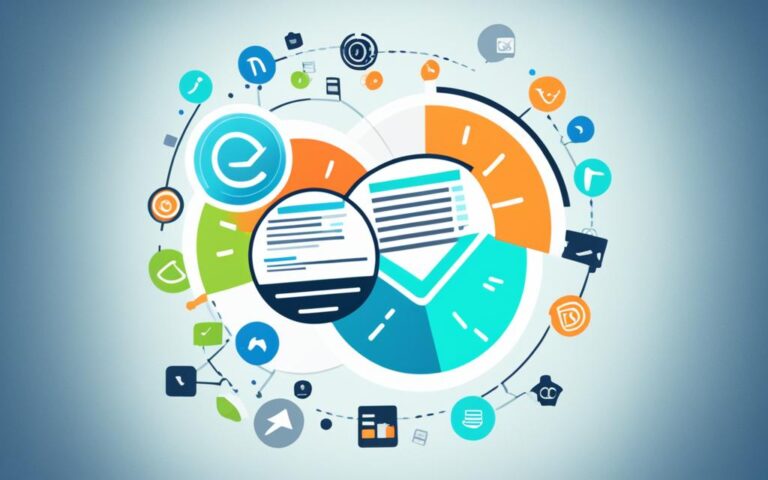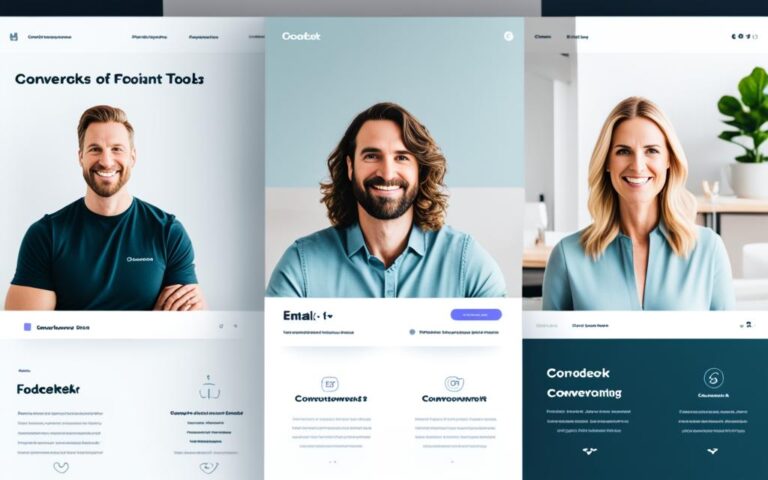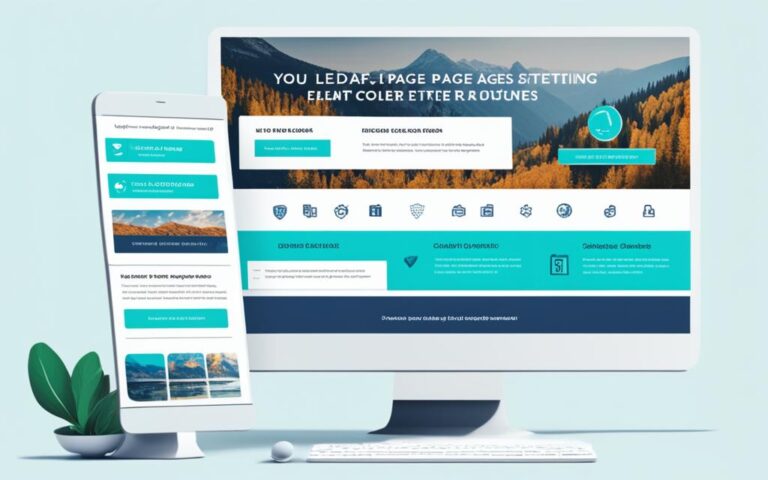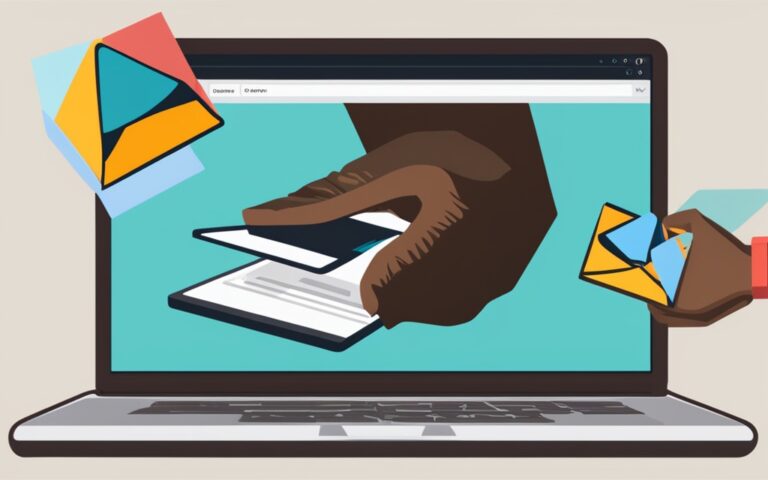Keep Mailchimp From Going to Spam: Expert Tips
Did you know about 21% of emails from marketers end up in spam folders? This shows a big challenge for marketers using Mailchimp1. With Mailchimp being a top choice, with a 66.33% market share, there’s a big chance to boost your campaigns2. Knowing how to keep Mailchimp from going to spam is key for successful email marketing.
This article will cover how to improve email deliverability and avoid spam filters. By using the right strategies, like email authentication and keeping your list clean, your emails will reach your audience. Let’s explore expert tips to make your Mailchimp campaigns better and keep them out of the spam folder.
Key Takeaways
- Understanding spam filters is vital for improving email deliverability.
- Mailchimp’s impressive market share underscores its effectiveness in email marketing.
- Subscriber permission is paramount in maintaining a healthy email list.
- Implementing email authentication methods can significantly enhance deliverability.
- Regularly cleaning up your subscriber list helps avoid spam complaints.
Understanding Spam Filters and How They Work
Spam filters check incoming emails by looking at several things. They look at the sender’s history, the email’s content, and how people interact with it. They give each email a spam score to decide if it’s unwanted. About 21% of emails from real marketers end up in spam folders, showing why it’s key to know about spam filters to get emails delivered3.
To make sure emails get through, it helps to make them personal and keep the sender’s identity real. Using engaging content and clean coding helps avoid spam flags. Keeping up with a good sender reputation and email design helps a lot too. Digital marketers should use smart tactics, like email authentication tools like DKIM and SPF4.
Knowing how spam filters work is vital for email marketing. Paying attention to subject line words and how senders act can improve results. Cleaning email lists and making content that grabs attention can make email campaigns better. This helps in dealing with spam filters’ challenges.
What Defines Spam in Email Marketing
Spam in email marketing is about sending unwanted and not relevant bulk emails with ads. It’s key for marketers to know what spam is to keep a good name.
About 73% of emails sent out are spam, showing how important it is to get your emails to the right people5. Sending emails to lists you bought without getting permission first is a big no-no. Laws like the CAN-SPAM Act set rules for sending ads, like needing unsubscribe links and honest subject lines.
Setting up SPF and DKIM records wrong can also make emails look suspicious5. If people don’t open your emails or have marked them as spam before, it can hurt your reputation. This makes it harder for your emails to get through.
Using words that trigger spam filters is a big mistake for email marketers. Words like “Act Now,” “Bonus,” and “100%” can stop your emails from reaching people5. Writing your emails well, with good grammar and spelling, helps them stand out as real messages, not spam.
To fight spam in email marketing, you need to do several things. Keep your list of subscribers clean, watch how people interact with your emails, and test your campaigns for spam risks. Adding personal touches, like using merge tags, can make your emails more engaging. This means people are less likely to mark them as spam5.
The Importance of Email Authentication Methods
Email authentication is key in email marketing. Using methods like SPF, DKIM, and DMARC proves your emails are genuine. This is vital because emails in spam folders often get ignored or deleted, hurting your campaign’s success6.
Starting in February 2024, Gmail and Yahoo will require custom authentication and a DMARC record for sending over 5,000 emails in a day. This shows how important email authentication methods are for good communication with your audience7. Without it, your emails might go straight to spam, reducing their visibility.
DKIM adds a digital signature to emails to fight spam and forgery. SPF checks for email forgery by verifying the return-path address. DMARC uses SPF and DKIM to ensure messages are genuine. Without these, the chance of being marked as spam goes up, showing why email authentication is crucial6.
Setting up custom domain authentication boosts email delivery. It removes Mailchimp’s default settings and lets you show your logo in inboxes with Brand Indicators for Message Identification (BIMI)7. This leads to better email delivery rates and a stronger bond with your audience.
How to Keep Mailchimp From Going to Spam
To make sure your Mailchimp emails get to your audience, focus on setting up custom domain authentication. This confirms your emails are real and lowers the chance of them being marked as spam. It helps your emails get delivered better.
Setting Up Custom Domain Authentication
If you own a domain, adding custom domain authentication is crucial. You need to set up DMARC and SPF records to prove your email is from your domain. Without these, your emails might be seen as spam, reducing their reach. Mailchimp has tools to help you with this setup, making delivery smoother.
Implementing DMARC and SPF Records
Using DMARC and SPF records is key to avoiding spam filters. These records tell email servers your messages are genuine. Studies show emails with these records are more likely to land in the inbox8. Also, about 15-20% of marketing emails don’t make it due to poor email filters9. Following these steps helps you meet rules and boosts your emails’ chances of reaching the inbox.
Email List Hygiene and Its Impact on Deliverability
Keeping your email list clean is key to getting your emails delivered. Cleaning up your list helps make sure your messages reach the right people. By checking email addresses and removing old or wrong ones, you lower bounce rates. This keeps your sender reputation strong.
Maintaining a Clean and Valid Email List
Keeping your email list in top shape needs a strong focus on managing your subscribers. Ignoring what your subscribers like and using bought lists hurts your impact on deliverability. Tools for email list hygiene make it easier to spot uninterested subscribers. They help you sort your audience better.
Using double opt-in and clear unsubscribe links also boosts your trustworthiness. This makes your emails more likely to get through.
Regularly Cleaning Up Subscribed Contacts
It’s important to regularly clean your email list. Experts say to check your list every three to six months. This keeps your messages fresh and interesting for your audience.
This active approach lowers the chance of getting spam complaints. It keeps your engagement rates up. Following best practices can really pay off. A clean list leads to better campaign success, higher open rates, and more conversions (Mailchimp)1011.
Maximizing Email Engagement Metrics
Getting more people to engage with your emails is key to a successful email marketing campaign. Only about 72.15% of Mailchimp emails make it to the inbox, with over 25% ending up in spam folders12. Emails marked as spam see a huge drop in click-through rates, making them much less effective12. It’s important to track how many people open and click on your emails, as well as how many mark them as spam or leave them unread13.
To boost engagement, segmenting your email list can help. For example, targeting loyal customers or those who have made purchases before can lead to better results13. Tools like Mailchimp’s Content Optimizer can also make your messages more relevant to your audience, increasing engagement13. Re-engaging inactive contacts can be cheaper than finding new ones, showing the value of focusing on quality over quantity13.
Also, emails that end up in spam folders have much lower conversion rates, 52% less, and fewer transactions, 28% less, than those in inboxes12. By listening to subscriber feedback and tweaking your approach based on engagement metrics, you can improve your email marketing success14. Making sure your emails are properly authenticated helps keep your sender credibility high and improves delivery rates14.
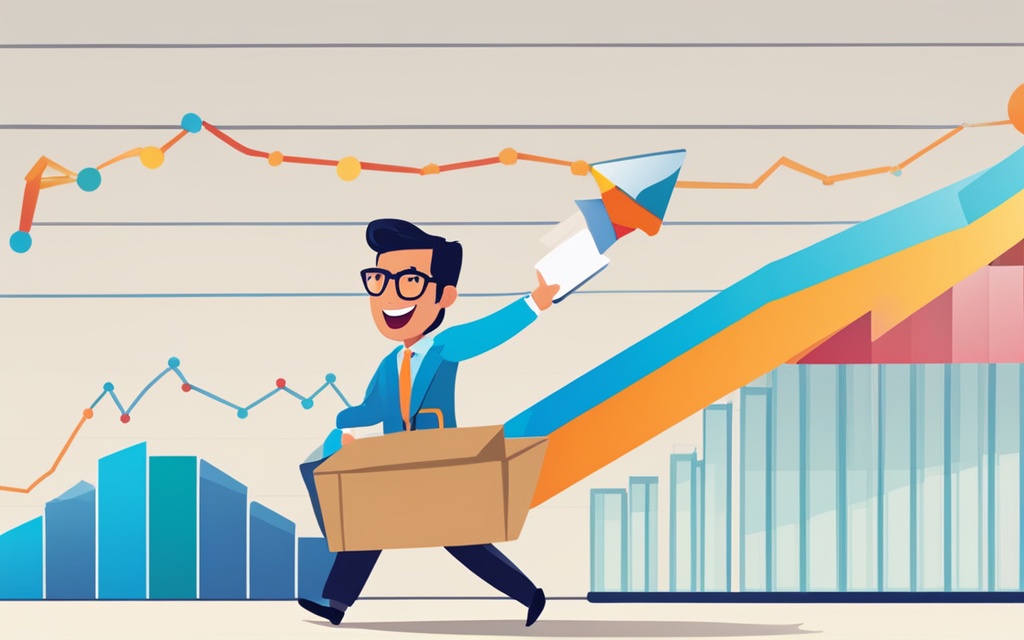
Email Content Optimization Techniques
Optimizing your email content is key to getting more engagement and avoiding spam filters. It means avoiding spam trigger words often found in unwanted emails. Spammy emails usually have lots of capital letters and exclamation points, which can get them blocked. It’s important to avoid these to make your emails easier to read and more likely to arrive in the inbox.
Avoiding Spam Trigger Words in Your Content
To connect with your audience, focus on creating value-driven content that meets their needs and interests. Knowing your audience well can lower the risk of your emails being marked as spam. Using both first and last names in greetings can make your emails more engaging, doubling open rates15.
Creating Value-Driven Content for Your Audience
Make sure each email provides clear value, like new product info, special deals, or solutions to their problems. This approach not only increases engagement but also strengthens your relationship with subscribers. Make sure your email links are complete and go straight to your server for better reliability16. Testing your email content regularly also keeps you connected with your audience16.
Adding a sense of urgency, like limited-time offers, can make people more likely to open your emails. Short, to-the-point subject lines work well too. Optimizing your email content boosts your campaign’s success and helps avoid the spam folder17.
Offering valuable and interesting content regularly builds a strong bond with your subscribers and keeps them loyal. It also helps you avoid spam traps. Email content optimization is an ongoing effort but is crucial for long-term engagement16.
Leveraging Mailchimp’s Anti-Spam Features
Mailchimp has many anti-spam tools that help send emails better. These tools keep your email list clean, which helps you look good to email providers. Sending emails regularly, getting good engagement, and having low bounce rates are key to avoiding the spam folder18.
Using Mailchimp’s anti-spam tools helps you follow best practices for your marketing. By making emails more personal, you can get better engagement and more conversions19. Mailchimp also helps you follow anti-spam laws, making email marketing easier in different fields.
Marketers need to watch out for things like too much spammy content and bad HTML. These can hurt your email delivery. By using Mailchimp’s anti-spam tools, you can keep your audience interested and boost your campaign success across various industries20.
Best Practices for Avoiding Spam Complaints
For any email marketing campaign, it’s key to know the best practices for avoiding spam complaints. About 21% of emails from legit marketers end up in spam folders1. To cut down on spam, build trust with your audience by being clear and getting their consent before sending emails21. It’s important to have an opt-in list to boost engagement and lower spam chances21.
Make sure your emails let people easily unsubscribe to lower spam complaints. Subscribers like to control their email settings22. Make your content engaging by making it personal, relevant, and useful. This can lead to higher engagement and less spam21. Firewalls use rules to fight spam, so make sure your emails follow these rules to improve delivery and engagement1.
Testing different parts of your emails, like subject lines and content, can make your campaigns better. This leads to better results and fewer complaints21. Keep an eye on how engaged your audience is. If they don’t hear from you often, they might report your emails as spam22. Following these tips helps you avoid spam complaints and keeps your email marketing successful.
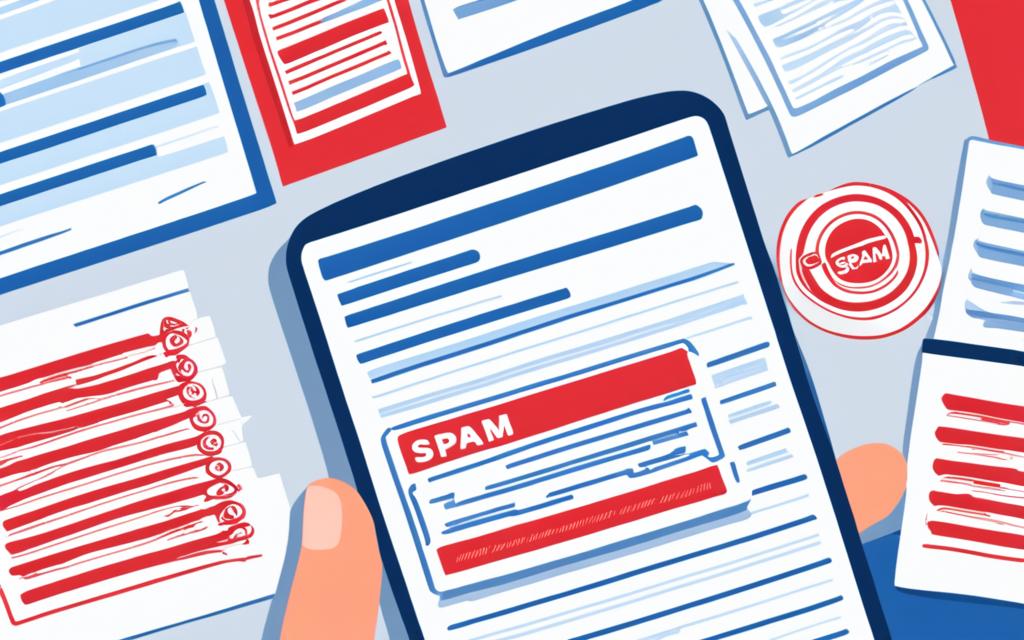
Conclusion
To keep Mailchimp from going to spam, you need a solid plan. This plan should include understanding spam filters and how people react to emails. With 21% of emails ending up in spam folders every day, it’s key for marketers to use good email strategies23.
Using authentication like DKIM and SPF helps a lot with getting emails delivered24. Also, cleaning your email list regularly can boost open and click rates24.
It’s also important to make your emails better. Avoid using words like “buy now” and “make money fast” to avoid spam filters24. Good content and subject lines help get more people to open your emails23. Personalizing your emails can also make people more engaged23.
Clear calls-to-action in your emails make sure they connect with people. This reduces the chance of being marked as spam24.
By following these tips, marketers can avoid legal issues and build a stronger connection with their audience. The main aim is to make sure your emails get to the right place—the inbox.
FAQ
How can I keep my Mailchimp campaigns from going to spam?
To stop your Mailchimp campaigns from being marked as spam, use email authentication like SPF and DKIM. Keep your email list clean, make your content engaging, and watch your email engagement closely.
What are some email deliverability best practices?
For better email deliverability, use double opt-in for subscriptions and clean your email list often. Personalize your content and keep an eye on your sender reputation to get more emails in the inbox.
How do spam filters determine which emails are unwanted?
Spam filters look at the sender’s reputation, how people engage with emails, the content, and user behavior. They give emails a ‘spam score’ to spot unwanted or off-topic messages.
What defines spam in email marketing?
Spam in email marketing means sending unwanted bulk emails to people who didn’t ask for them. It includes messages that are not relevant to the user’s interests.
Why are email authentication methods important?
Email authentication like SPF, DKIM, and DMARC proves your emails are genuine. It helps improve your sender reputation and boosts email deliverability, lowering the chance of being marked as spam.
What is the significance of email list hygiene?
Keeping your email list clean is key for good deliverability. Make sure your list has valid, active email addresses. Remove inactive accounts and fix wrong addresses to lower bounce rates and boost engagement.
How can I maximize my email engagement metrics?
To boost your email engagement, segment your audience and personalize your emails. Use A/B testing to find out what your recipients like best.
What techniques can I use for email content optimization?
For better email content, skip common spam words and focus on creating content that meets your audience’s needs. Make your emails easy to read and engaging.
What are Mailchimp’s anti-spam features?
Mailchimp has tools to fight spam, like compliance tools, email list management, and content personalization. These features help improve deliverability and follow email marketing best practices.
What best practices can help in avoiding spam complaints?
To cut down on spam complaints, build trust with your subscribers through clear messages. Make sure you have their clear consent for emails and offer easy ways to unsubscribe in every email.
Source Links
- https://mailchimp.com/resources/avoid-spam-filters/
- https://folderly.com/blog/mailchimp-emails-going-to-spam
- https://templates.mailchimp.com/concepts/spam-filters/
- https://enflowdigital.com/avoid-mailchimp-emails-going-to-spam-a-comprehensive-guide/
- https://www.inboxally.com/blog/mailchimp-emails-going-to-spam-how-to-fix-and-avoid-it
- https://mailchimp.com/resources/email-deliverability-why-it-matters-and-what-it-takes/
- https://mailchimp.com/help/about-email-authentication/
- https://mailchimp.com/help/anti-spam-requirements-for-email/
- https://mailchimp.com/help/use-safe-sender-lists-to-stay-out-of-spam-folders/
- https://www.helloinbox.email/blog/how-to-fix-mailchimp-emails-going-to-spam/
- https://blog.beehiiv.com/p/why-do-my-mailchimp-emails-go-to-spam-promotions-or-junk
- https://blog.mystrika.com/mailchimp-emails-in-spam/
- https://mailchimp.com/resources/email-engagement-and-deliverability/
- https://techoptimised.com/how-to-stop-mailchimp-emails-going-to-spam/
- https://mailchimp.com/resources/three-tips-for-optimizing-your-content-in-real-time/
- https://mailchimp.com/help/best-practices-mailchimp-email/
- https://metricswatch.com/how-to-optimize-mailchimp-open-rates-7-actionable-tips
- https://www.warmy.io/blog/why-is-my-mailchimp-email-going-to-spam-and-what-else-can-i-do
- https://mailchimp.com/resources/email-marketing-funnel/
- https://cospark.com/blog/7-common-pitfalls-to-avoid-when-using-mailchimp/
- https://mailchimp.com/resources/spam-complaint-rate/
- https://mailchimp.com/help/how-legitimate-marketers-can-prevent-spam-complaints/
- https://www.writecream.com/mailchimp-emails-going-to-spam-do-this/
- https://www.wiredmessenger.com/blogs/mailchimp-email-going-to-spam

